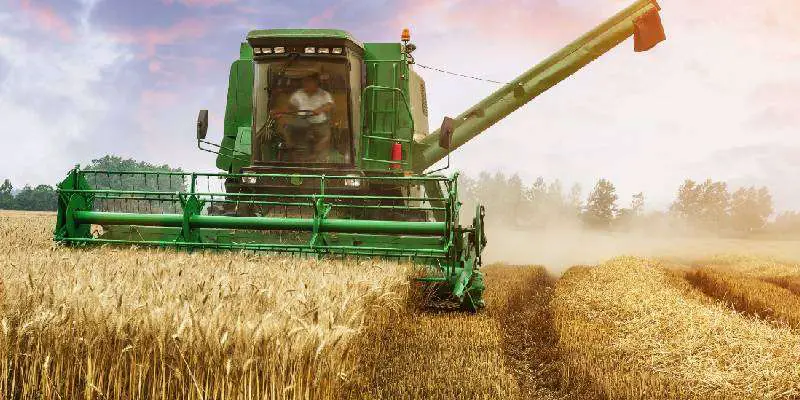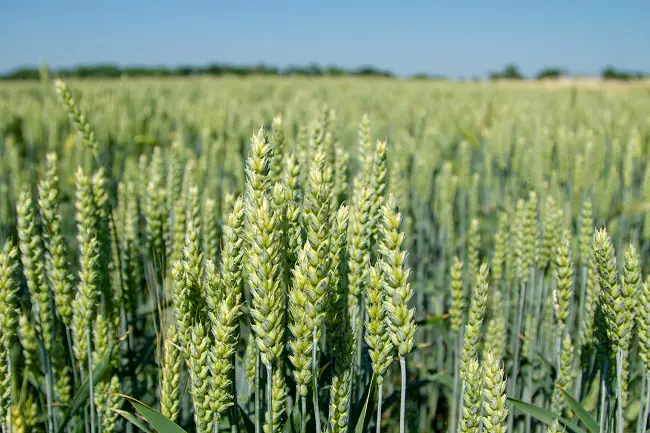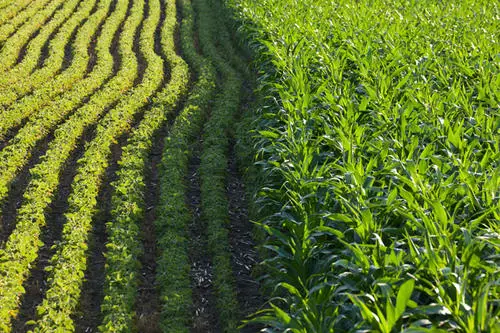Wheat (Triticum aestivum) is one of the most important food crops in the world. Wheat is milled into flour which is then used to make various foods such as bread, cakes, pasta and so on. What’s mostly made from milled flour is bread. Bread is very important for most families, it constitutes most of the breakfast meals eaten on a daily basis. Bread is made or baked at commercial level by companies and at household level. Other by products of wheat are wheat straw and wheat stalks. Wheat straw is used as substrate in mushroom production and wheat stalks used in the manufacture of stalk feeds.
Contents
Harvest Maturity
Wheat crop must be harvested when the grain is dry and only the fully mature grains should be harvested. Harvesting can begin once the crop has attained a grain moisture content around 15 percent even though lower moisture content around 12.5-13 percent are preferable for storage. Wheat varieties that are prone to shattering must be harvested earlier and dried using artificial means.
Machine Method of Harvesting Wheat
Wheat can be harvested by a machine. This involves use of a machine called a combine harvester, the machine must be correctly calibrated to reduce wheat grain loss. The machine cuts and threshes wheat. Threshing is a process of separating grain from the rest of the plant material. The plant material is then winnowed by the machine to leave just the wheat grain. The combine machine also has facility for air-drying in the event that the wheat grain has been harvested at a slightly higher moisture content than the optimum. Packaging of wheat into sacks is also a facility that some modern combine harvesters have. The good thing with this machine is that, it can be used to harvest a variety of field crops, what’s needed is to change to the appropriate header size. This method is common amongst commercial farmers who grow hundreds of hectares of a single crop.
Operating the Combine Harvester
Crucial adjustments needed for harvesting wheat are fan speed to and cylinder speed. Once properly adjusted, fan and cylinder speed improve threshing and cleaning process of the machine. High cylinder speed results in damaged kernels or grains, this lowers quality of the wheat kernels. High fan speed cleans chaff easily but loss of wheat grain will result due to blowing. Most harvesting losses occur at the cutter bar when it shakes the stalks, resulting in grain falling on the ground.
Hand Method of Harvesting Wheat
Hand tools such as sharp sickles are used to hand harvest wheat. Wheat is cut into stacks, reaped, threshed and then winnowed until wheat grain is left clean. Winnowing is the process of separating threshed grain from the chaff. Winnowing is mostly done by winnowing baskets, with women using the advantage of the wind to wipe off chuff from the grain. The method is most common with small scale farmers who grow wheat on small portions and cannot afford to hire a combine harvester.
Other Methods of Harvesting Wheat
Another wheat harvesting technique is using a swather to cut the crop once the crop has reached physiological maturity despite the high moisture percentages in the grain. This technique is most common in the Americas where the wheat grain does not have adequate time to dry before harvesting. The cut wheat crop is dried in a windrow which is also called a swatch to a point where moisture contents lessens and crop can be threshed by a combine. This method is expensive as it requires specialized equipment such as the pick-up device and the swather itself.
Assessing Wheat Harvest Losses
Ground speed, header height and the reel speed have to be properly adjusted to minimize wheat harvest losses. Aim to have not more than five percent in grain loss when harvesting a wheat crop. Wheat grain found underneath a combine harvester are as a result of header losses and pre-harvest losses. Grain counts can be done to assess loss due to harvesting.
Drying Harvested Wheat Grain
Freshly harvested wheat kernels should be dried to a moisture content of 12.5 percent for storage or 13.5 percent for immediate sale. High-moisture wheat (greater than 15 percent moisture) can be dried with both high-speed and bin drying equipment. Maize drying systems can be used to dry wheat if adjustments are made to maintain adequate airflow. Moisture quantities in maize and wheat are different but same method of drying can be implemented, varying a few parameters. Wheat has a higher resistance to airflow than maize but dries at nearly the same rate as maize. For commercial wheat, drying air temperatures should be below 60°c to avoid damage to milling quality. Seed wheat should be dried at 42°c or lower.
Moisture Content
Wheat grain can be harvested at higher moisture content than the optimum of 13-15 percent as long as facilities for dying the grain quickly are available. If grain is not dried quickly at high moisture content, there is risk of grain spoiling through molding and a risk of spouting exits too. It is highly advisable for new wheat farmers to avoid harvesting at higher moisture contents but instead stick to the optimum moisture content levels.
When to Start Harvesting Wheat
Commence harvesting wheat once the crop has field dried enough and its brownish-beige like in color, when no green color is no longer visible. Moisture meters are essential tools used in determining grain moisture content, once optimum moisture percentage has been determined, wheat harvesting starts. Most moisture meters are used with other grain crops hence the need to have the machine calibrated to suit requirements for wheat moisture testing. In the absence of moisture meters, small scale wheat farmers harvest the crop based on harvesting indices such as changes in color of the crop, color change in grain, increase in density of grain as so much more. Most efficient way is the countdown to days of physiological maturity as stated on the seed packaging. Some wheat varieties mature earlier than others hence it’s important to know the number of days until maturity.
Harvesting wheat used to be a tedious job but not anymore through the introduction of the combiner harvester, growing of wheat in most countries has improved as more can be done is a short space of time. Technology is of great essence to farmers but there remains most small scale farmers who cannot afford the sophisticated machinery hence they still resort to traditional ways of harvesting wheat using sickles.




